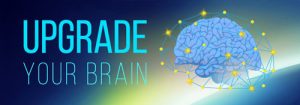Structure of the brain and how it is related to speed reading
How do you write a text message? How do you find a name in your mobile phone contacts list? How to enter an appointment there? I am sure each of the readers will be able to answer these questions.
How is the brain constructed? What is the responsibility of each of its parts? How to make it work better? I guess most of us do not have the answers.
In the courses I give, I dedicate a small section to explain how this machine, the brain, works.
I do of course not pretend to cover in a few minutes researches that took hundreds of man-years to complete, but I find that a few data well-organized about the structure of our brain can help us “take control” and start use it and the large potential it hides in a better way.
Therefore, for those who have no time or will to collect pieces of data from different sites, I present a short summary about our brain, relating it to the ability of fast reading in general, and 3-dimensional reading in particular.
3brains, 4 lobes, 2 hemispheres
In 1952 Paul McLean introduced the idea of the 3-parts brains, that is: that we have 3 brains and not just one. The brains, that developed while humans evolved, are built one on top of the other.
The first is the reptilian brain, common to us and to reptiles. In the scientific community it is also named “brain stem”, it is connected directly to the spine and it is responsible for all the native functionality having to do with survival. The second brain created in the evolutionary process was the intermediate brain, or early mammals brain. It is better known as the limbic system, and this is the “emotional” brain. The third brain is the new mammals brain, the part that makes us superior to other mammals, it is named the Neo-cortex and it is the location of abstract thought, strategic management and creativity.
Let us get acquainted with the parts of the brain.
3brains
Reptilian Brain
The brainstem
This brain connects the spine with the “large brain”. This is a narrow region where the nerve fibers bringing sensations from the body to the brain, and fibers bringing commands from the brain to the muscles and glands, pass. It is responsible for the functioning important for survival : control of breathing, heart rate, blood pressure, digestive system and metabolism, wakefulness, hunger, regulation of body heat and sugar level and more.
The small brain (cerebellum
Even though it is independent, it is part of the reptilian brain, responsible for our body position, equilibrium and coordination. Responsible for our ability to move the jaw in order to speak or chaw, our ability to walk and additional functioning that is learned by copying. After a certain motoric movement is learned in the motoric center in the parietal lobe, it is managed in the cerebellum.
The limbic system
Together with the brainstem, the limbic system controls blood pressure, body temperature, heart rate, level of blood sugar, appetite and emotional relation with food. The hippocampus and Amigdala are responsible for creation of memories. this system is considered the center of human emotions and is involved in their expression, but it is also the center of the pathology of depression. it consists about 20% of the volume of the brain. Let’s get acquainted with its parts:
The hippocampus is part of the limbic system and has a role in memory and navigation. Its name is derived from its similarity to a lying hippocampus (sea animal). It has an important role in creation of new memories and it knows how to correlate the position of one item with that of another. It is considered the center of visual memory.
The Amigdala (almond in Latin) is an almond looking organ. It is correlated to emotional reaction in danger situation (especially fear and aggression), takes part in behavioral, autonomous and hormonal reactions to emotional solicitations. It is considered directly involved in processes of emotional regulation, “responsible” to fear and frightfulness. It is known that the first human memories after birth are stored in the Amigdala.
The Thalamus is one of 2 egg-like formations made of grey material, located deep inside every brain hemisphere. It is in the thalamus that the awareness of sensations such as heat, pain, touch etc starts. This is the center of transmission in the brain, it is responsible for orientation of the impulses arriving from the senses (except for smell) to the Cortex. The Thalamus differentiates between peripheral and central, it has a role in long-term memory.
Hypothalamus
A small formation in the frontal brain, linked to the thalamus residing above it, and to the Pituitary Gland residing beneath it. it contains many important centers that operate and control the body temperature, hunger, thirst, wakefulness, sleep, sexual function and coping with states of anxiety. It is linked to emotional activity and sleep, acts as integration center of hormonal activity and autonomous nervous system activity, by controlling secretion of hormones from the Pituitary Gland.
Even though it is not directly related to the limbic system, we will mention here the Pineal gland, located behind the Thalamus, it receives pulses from the eye and is sensitive to light. It is considered in the esoteric world to be the third eye. It is responsible for the internal perception of time, it produces melatonin which is related to states of sleep and wakefulness.
The Neocortex
This mind is more developed in the human kind, through it we can think abstractly, plan, analyze situations logically, make complex calculations, and implement decisions. It is the seat of the language and talk (that exists only in humans). This is the brain we use most of the time consciously.
The cerebral cortex is composed mostly of neurons, it looks grey therefore it is sometimes called the grey material. The fibers carry information from and to the body. The fibers bringing impressions from the right part of the body cross those arriving from the left part, and reach the opposite hemisphere. The fibers carrying commands from the cortex to the muscles cross as well, therefore every hemisphere is responsible for the movement of the opposite half body. The cortex is folded and looks like series of folds and grooves. This structure originated from the cortex growing within the skull, resulting in its need to compress within a small area. Humans have the most developed cortex of all animals.
The 4 brain lobes can be seen clearly in the neocortex
The frontal lobe (lobe of the forehead) : located in the forehead, responsible for planning, logic, oration, oriented behavior. Connected to the location of emotions in the limbic system.
The temporal lobe (lobe of the temples) : center of hearing and talk, including several kinds of memory. Spoken language is located in the left hemisphere in most people.
The parietal lobe (lobe of the crown): receives data from the skin. The neurons in this lobe process the data of touch, sensations including heat, cold, pressure, pain and orientation in space. The motoric center, controlling voluntary motoric operations, is located In its frontal part.
The occipital lobe (nape lobe) is directly above the cerebellum, is responsible for processing of sensory data from the eyes.
2Hemispheres
The biggest differentiation possible in the human brain is most probably its division into 2 hemispheres, each with its own functioning. The 2 hemispheres are connected through Corpus Callosum, responsible for the mediation between them. This mediation is what provides us with a full picture of reality, as result of the integration of the separate outlooks of each 2 hemisphere.
The left hemisphere controls verbal communication and the ability to tell a story. It uses logical, rational and abstract thought, and is responsible for mathematical logic. It grasps the dimension of time linearly.
The right hemisphere is more motoric, creative and emotional. It sees the world as a whole. It controls the non-verbal communication (body language) and uses intuitive logic. It is more spatial, rhythmic and linked to art. It grasps the cyclic dimension of time.
The left hemisphere controls the right part of the body, and the right hemisphere controls the left part of the body.
The Brain’s world of communication
The brain is built out of Neurons; this is a general name for cells that are electrically activated in the nervous system, cells responsible for transmission and processing of data. All the data is transmitted in the brain through electrical pulses and Neurotransmitters.
This is where the synapse is essential: this is the tiny gap through which neural signals pass from one neuron to another. A neural signal that arrives to the synapse causes release of a chemical named Neurotransmitter that releases an electrical signal in the adjacent Neuron. Some of the brain cells have more than 15000 synapses.
As data comes in from various sources through the 5 senses, the brain needs to encode it into one language, common to all parts of the brain. The brain “talks “electric language””.
The dominant brain
Paul McLean suggested that in each of us one of the brains is dominant.
A person whose dominant brain is the reptilian brain is a rigid (strict) man, tending to repetition and ritualism, who finds it hard to learn from his own mistakes.
The life of a man whose limbic system is dominant depends on his ability to avoid pain and experience as much pleasure as possible.
The dominance of the Neocortex, being the location of abstract thought, creativity, strategic thought – makes a man able to plan, invent, correlate between data, while keeping an emotional distance from solicitations.
How will all this be expressed while reading?
Assuming that the 3 brains are expressed in all of us, we need to take into account on one hand the disturbance they will cause if we ignore them, and on the other hand we can make sure that each brain will supply us its special qualities to support the building of the ability for fast reading.
The brain trunk is responsible for our survival functionality. We are normally not aware of it and take its functioning for granted. But it is the correct functioning of the breathing, digesting etc that enable us the “luxury” of logical thinking, learning, reading. When we want to be focused on reading and read our book or study material quickly, we have to take our body into account:
– We’d better not eat too much before that, so as not to divert energy to digestion, but we should also not let hunger divert our attention from the reading.
– Similarly regarding other needs – we’d better visit the toilet before starting to implement the technique.
– Our body contains about 69% water; we’d better refresh it and drink enough.
– We should sit in a comfortable posture, so as not to divert our attention. We should make sure we have the right lighting, and most important – from time to time take a deep breath and ensure a flow of oxygen to our brain.
Dr Ronny Paz from the neuro-biology department in Weitzman institute tells us about the importance of the limbic system during the process of reading:
.. The Neo-cortex and the hippocampus conduct a kind of dialog that includes signals moving from the Neo-cortex to the hippocampus and back. But when this data is related to emotions, the Amigdala joins the communication and influences the transmission of signals (from Interface, Spring/Summer 2008)..
– If we wish to remember what we learn and wish not to have emotional blocking related to reading, we should correlate speed reading to positive emotion
– It is therefore important to accentuate every success in reaching the objective of the reading
– It is also important that we have a clear objective when reading, as the objective will provide the emotional fuel that will enable us to stay with the reading material.
The Neocoretex is where the understanding of reading, creation of connections between different new ideas and between them and data we already know happens. We have to take into account both hemispheres, and allow each of them space for expression. (In the article “What should we do to increase the speed of our reading”, published in our Internet site, I detailed what can be done practically for speed reading).
The NeoCortex is the human-specific brain part; there we find our potential as homo-sapiens, that is – the possibility not to submit to our “animal” impulses, to our desires and needs.
The knowledge gained by reading can help us develop that part of the brain. The 3-dimensional reading, and the speed-reading ability it contains, helps us to learn better and faster, making use of this wonderful partner of ours, the brain, the fastest computer in the world.
This month’s citation:
“it is not sufficient to have a good brain. It is more important to use it well”-Descartes






